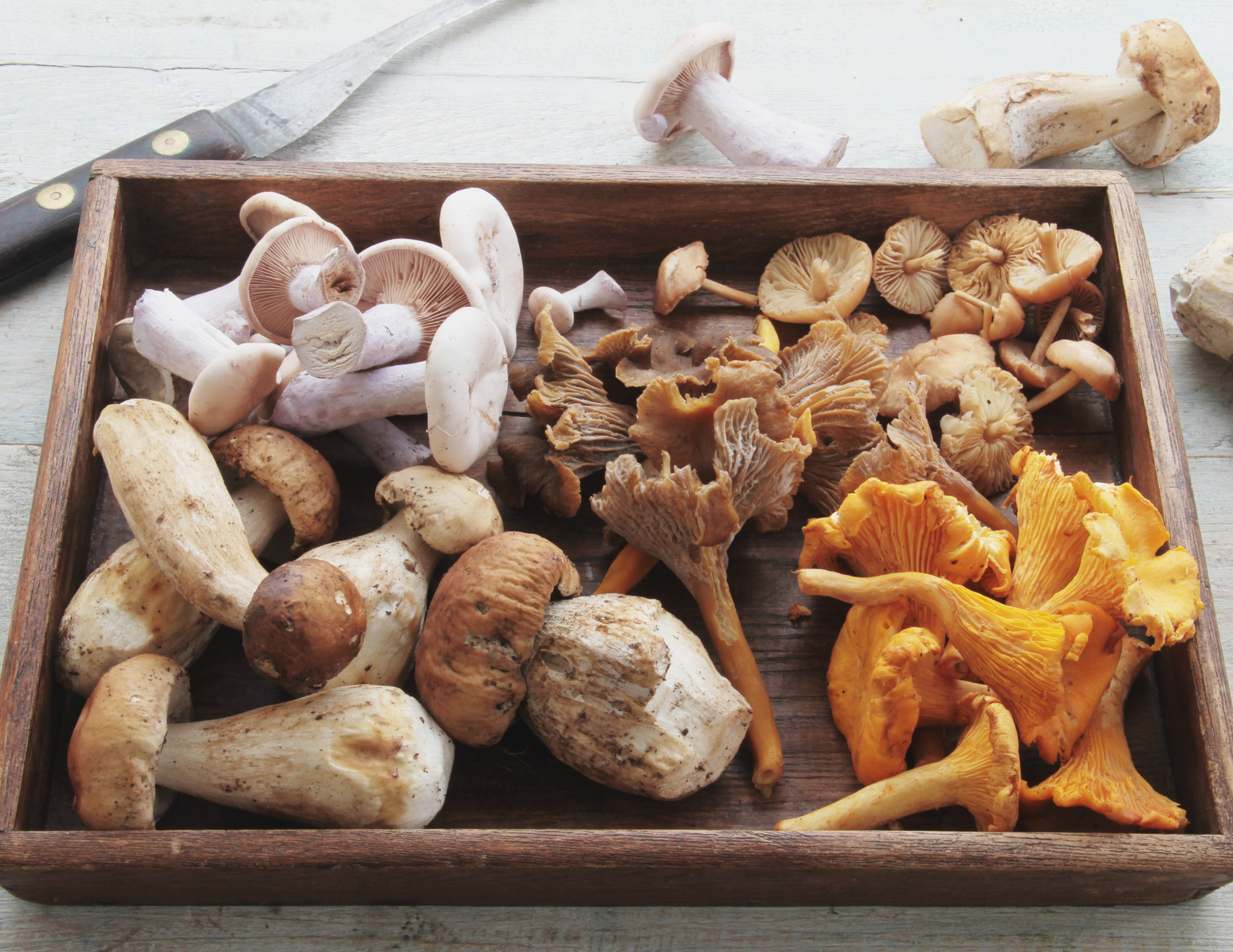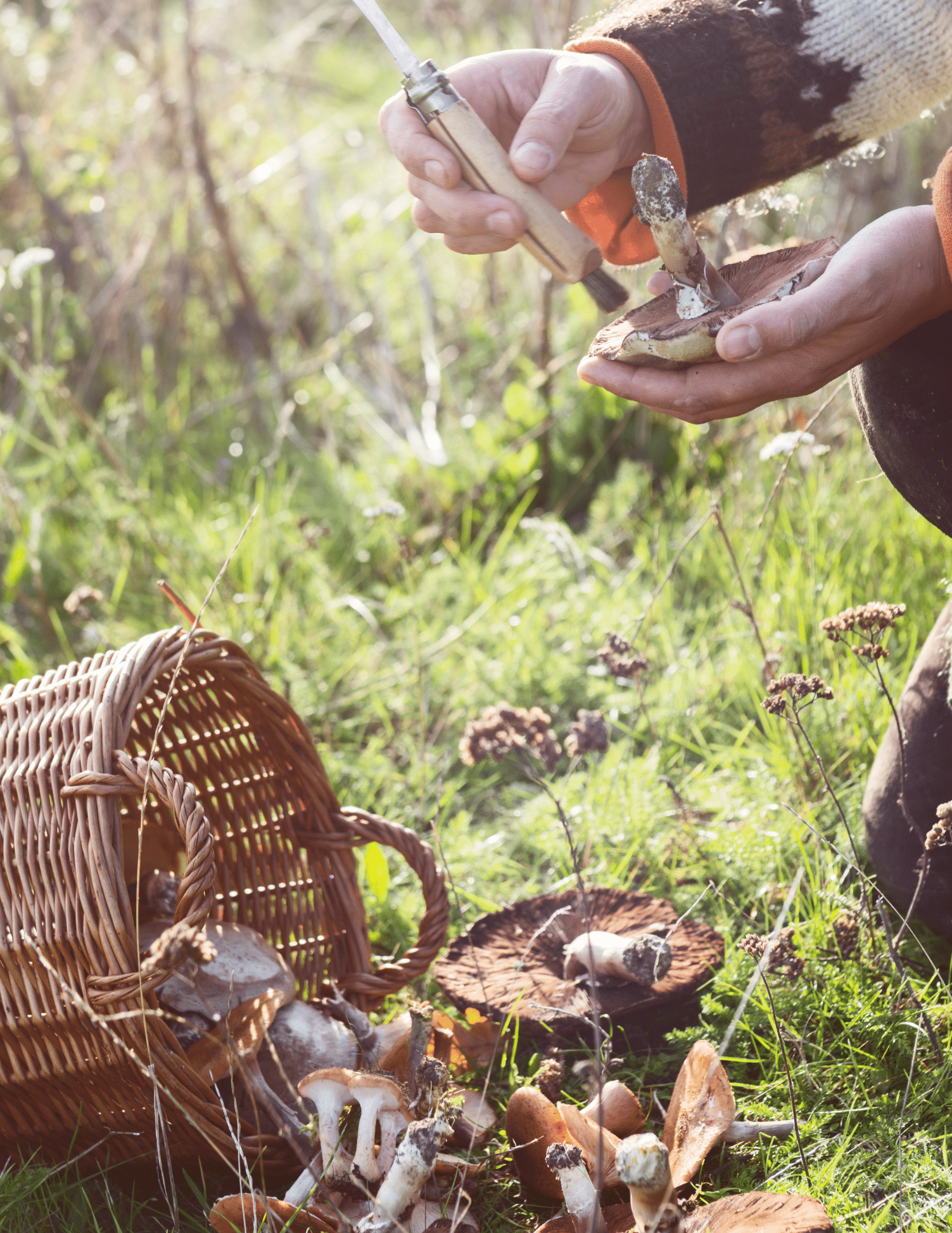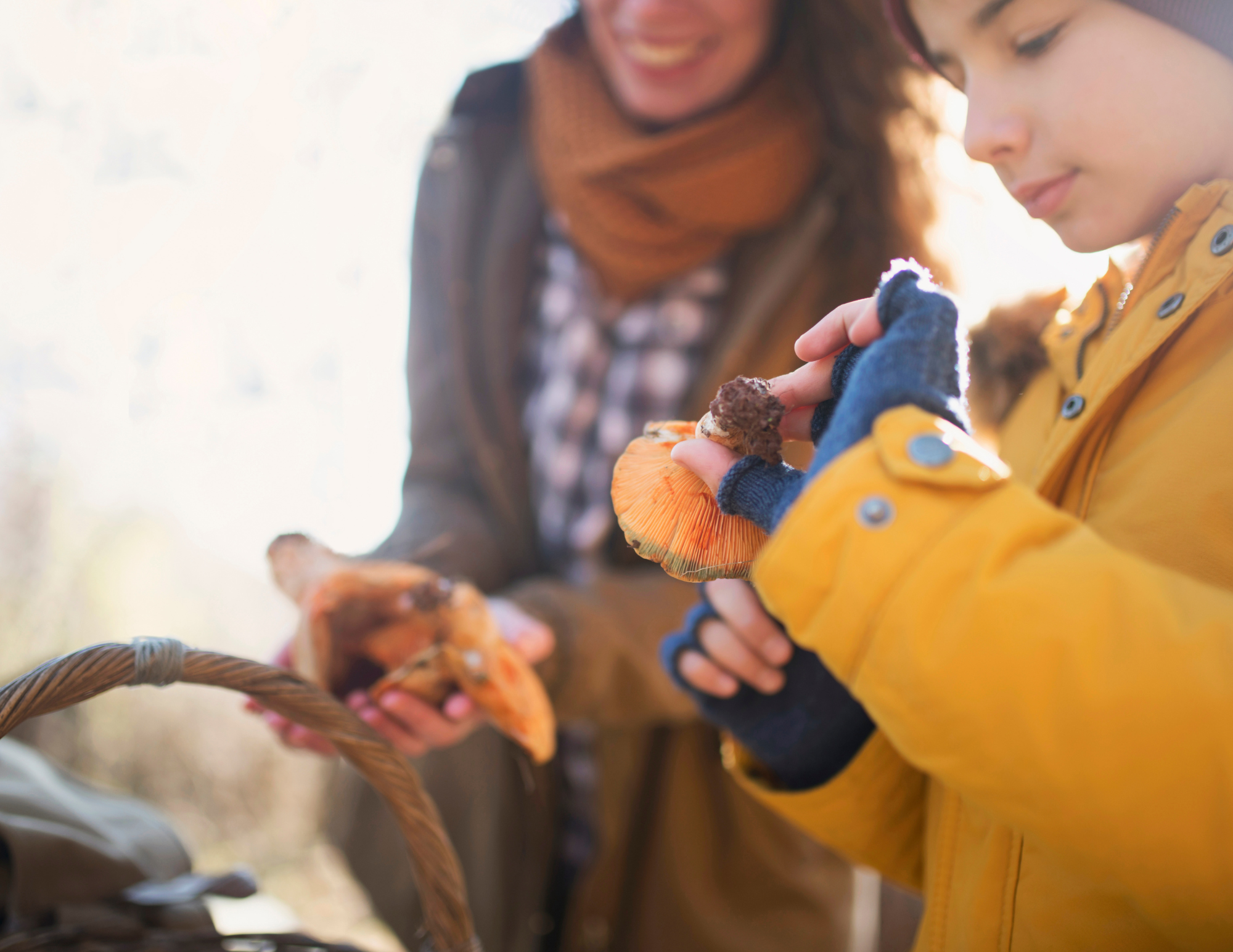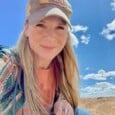Community Environment Health & Wellness
Jennifer Preston: Foraging for the fungus among us
Editor’s note: This is the second in Jennifer Preston’s two-part series about mushrooms. Read the first here.
Health & Wellness Sponsor
Health and Wellness stories are made possible in part by Virginia Mason Franciscan Health, a proud sponsor of Gig Harbor Now.
The Pacific Northwest is known for its wide variety of wild mushrooms. They sprout up throughout the year from the coast to the Olympics Peninsula’s temperate rainforest, in local parks, perhaps even in your backyard.
We are lucky to be surrounded by a culinary world full of fungal delights, far beyond the familiar white button mushroom (Agaricus bisporus) found in most grocery stores, or those slimy, brown things in cans (gasp).
Fall is a particularly bountiful time of year in the PNW. Chanterelles, one of my fresh-picked favorites, are beginning to appear in local markets like Harbor Greens and Metro Market, most likely foraged by Adam of Adam’s Mushrooms. Several varieties can be found locally, including Pacific golden (Cantharellus formosus), white (Cantharellus subalbidus), and rainbow (Cantharellus roseocanus). They all magically transform into savory delights sautéed in a little butter and garlic.
Other tasty, in-season foragables include oysters, porcini/King Bolete, lobsters, cauliflower and two other favorites, candy caps and matsutake.

A box of foraged mushrooms
Autumn is a busy time for foragers since many mushrooms, like chanterelles, cannot be cultivated and must be enjoyed or preserved at once. Mushrooms that cannot be grown in a lab are mycorrhizal, which means that they have a symbiotic relationship with specific tree roots, like Douglas fir and hemlock, and need those trees to exist.
If the fungus you seek is not in season, it may be available dried and preserved, which is an excellent way to enjoy their umami taste and nutrients throughout the year.
The candy cap can
We are lucky to live in one of the best places on Earth for mushroom foraging.
It’s a healthy activity. Whether you’re learning how to identify, photograph, cook or grow them, foraging gets you outside, physically and mentally engaged, close to nature and encourages learning — all good things!
To whet your appetite, check out Aaron Hilliard’s Mushroom Wonderland YouTube channel. He’s a member of the Kitsap Peninsula Mycological Society and graciously shares his wealth of accumulated knowledge along with Lowell Dietz of the Dietz Mushroom Farm. If you’re interested in mushroom cultivation, Dietz has many helpful resources on his website to get you started growing mushrooms at home.
As you explore out in the field, or perhaps in a favorite local park, and turn on your “mushroom eyes,” you’ll be surprised to discover the many hidden treasures you previously overlooked. What was once “a dead tree with weird fungus” becomes “a downed Douglas fir with Turkey Tail mushrooms (Trametes versicolor)” — one of many “magical” mushrooms that has been shown to prevent cancer from metastasizing, boost immune function, enhance certain cancer treatments and alleviate the side effects of chemotherapy.
There is still so much to be discovered, admired and protected alongside our fungi friends. Just think, the next time you explore a local woodland, you could be taking the photograph of a mushroom containing the cure for dementia, auto-immune disorders or cancer.
Oh, a-hunting we will go!
Here are a few tips to get started hunting for wild, edible mushrooms. Always prioritize safety and responsible foraging.
Educate yourself: Before heading out, study various mushrooms and their characteristics. Familiarize yourself with both edible and their poisonous lookalikes. Books, online resources, and local mycological societies provide valuable information and much of it can be accessed for free. I started with the books All That the Rain Promises, And More by David Arora and Mushrooms of the Northwest by Teresa Marrone and Drew Parker.
Prepare: You don’t need much to start foraging, but a few useful tools will make it more enjoyable and safer. List of recommended supplies below.
Go with an experienced forager: If you’re new to mushroom foraging, consider joining someone experienced or go with a local mycological group like the Kitsap Peninsula Mycological Society. Learning this way is invaluable and quickly reduces the risk of misidentifying mushrooms.
Location matters: Choose the right location for foraging. Public parks, forests, and nature reserves may have specific rules or restrictions on foraging. Avoid areas that might be contaminated by pollutants or pesticides and if possible, gather away from the “dog-leg-lift” zone.
Respect the environment: Harvest mushrooms responsibly. Avoid damaging the environment, especially if you’re walking off-trail, by stepping thoughtfully. Follow the Leave No Trace philosophy. Take only what you will use and leave the rest undisturbed.
Over-harvesting can harm local ecosystems and impact mushroom reproduction. Some foragers recommend cutting only 25% of a particular mushroom from a patch. Not only to leave some for the next person, but because their spores will ensure a bountiful harvest the next season. Every mushroom harvested is one less producing spores for reproduction. (Tip: I use a mesh bag to forage rather than a bucket to allow spores to drop and spread helping “reseed” as I walk.)

Fall mushroom foraging
To cut or to pull: There’s a massive simmering debate about whether or not it harms mycelium if you pull up mushrooms rather than cut them at the base. Many studies have shown that it doesn’t matter.
For me, it depends on why I’m looking at a particular mushroom. I need to pull it if the base helps me identify whether or not it’s edible. When I’m harvesting to eat, I gently sweep the area underneath the cap with my hands and cut as far down the base at the soil line as possible. I do this for three reasons: 1. The stems of edible mushrooms are often just as delicious as the caps. 2. It reduces the amount of soil and insects you’re bringing home. 3. I’ve seen a second flush of chanterelles grow from a single cut stem!
Pay attention: When you’re in the woods searching for mushrooms be sure to look up occasionally and check your bearings. This may sound silly, but you’ll be surprised how the forest lures you deeper in with “just one more step.” Before you know it, you’re lost. If you go off trail, look for a landmark, like a uniquely shaped tree. Keep looking back to make sure it’s still in your line of sight. This way you will make it back to the trail. If you’re with a mate, communicate and let them know where you’re headed and check in occasionally. People die every year getting lost while mushroaming.
Mushroom identification: Be absolutely certain of the identification of any mushroom before consumption. Double and triple-check the characteristics and cross-reference using guidebooks or expert advice. Be cautious of look-alike species since some edible mushrooms have toxic counterparts. If you are unsure AT ALL about a mushroom’s identity, do not consume it.
Proper storage and preparation: Once you’ve harvested your mushrooms, transport them in a breathable container or basket to prevent them from getting soggy. Clean and store them in a paper bag in the fridge. When preparing them for consumption, cook them thoroughly. Their cell walls contain chitin, which is the same material that puts the “shell” in shellfish and is difficult to digest. Also, some edible mushrooms can be toxic when raw or undercooked.

Foraging for mushrooms
Share knowledge: Engage with the local community or mycological groups. Share your experiences and learn from others. Use a phone app like iNaturalist to log your specimens, track where you found them and share discoveries with fellow naturalists by uploading photos of your find.
Safety first: If you suspect mushroom poisoning, seek medical help immediately. Take a sample or a photo of the mushroom to assist health care professionals in providing treatment.
Foraging supply list
Basics
-
- Small backpack
- Mesh drawstring bags for carrying mushrooms, like reusable produce bags
- Mushroom ID book
- Water/snack
- Compass
- Printed map (cell service can be non-existent even in nearby parks)
- Waterproof layer for wet weather
- Whistle to signal your mate (can also be used to frighten bears away)
- Small folding knife to trim mushrooms (some have a brush at the end for cleaning too)
- Headlamp/flashlight (it quickly gets dark in the woods)
- First aid kit with instant ice (I stepped over a log with a hidden wasp nest and was stung quite painfully. After hobbling back to the car, the ice was such a relief!)
- Phone/camera
Extras
-
- Waterproof boots for when it’s especially mucky
- Legwarmers or half chaps when bushwhacking (these save my legs/leggings from abuse, especially on the coast in high, sharp bear grass)
- Walkie-Talkies to communicate with your fellow forager if you separate

Jennifer Preston of Gig Harbor is an award-winning writer, designer, eco-advocate and certified Master Gardener.

